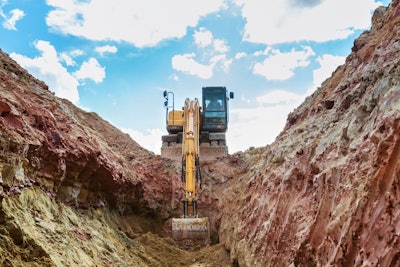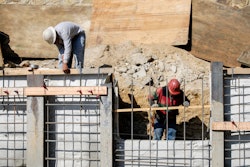
Trenching and excavation are two of the most hazardous operations within the construction industry. In the first six months of 2022, 22 workers died during trenching and excavation work, surpassing 2021’s total of 15 fatalities. Fatal cave-ins and trench collapses were reported in several states, including Florida, Michigan, Minnesota, Idaho, Tennessee, Nevada, Indiana, Hawaii, Mississippi and Texas.
Any worksite accident is grounds for addressing safety issues on the job. A fatality caused by workplace hazards means immediate action is necessary to ensure protections are in place for employees performing similar duties.
What Are the Hazards Associating with Trenching?
Workers responsible for digging operations, those repairing utility, water or sewer lines and road builders are at risk of being caught in a cave-in, the most common trenching or excavating hazard. Cave-ins can happen when heavy equipment is located too close to the side of the trench, or the soil loosens from vibrations of the equipment or other traffic in the area. Sandy soil that does not hold tightly together can also easily cave in, or water can weaken the sides of the trench. Small amounts of dirt falling may not seem especially dangerous; however, one cubic yard of dirt can weigh more than 3,000 pounds, which is easily capable of crushing a human body.
Trench walls may collapse suddenly, leaving no time for workers to get out of the way. For instance, the latest trenching fatality that occurred in Texas was due to a cave-in when the unprotected, 20-foot trench collapsed upon the employees while they were working. The trench shields that might have saved their lives were at the excavation site, sitting unused.
Other types of trenching hazards include:
- Lack of oxygen or exposure to atmospheric hazards. Working in trenches can often mean depleted oxygen levels, or workers may be exposed to toxic chemicals or gases from the atmosphere within the trench.
- Falling loads. Equipment or excavated dirt can fall into the trench and strike or bury workers.
- Slips and falls. Workers themselves may fall into excavated areas, especially when there is no signage or barrier to warn or prevent it.
- Hitting utility lines. When digging, hitting utility lines can cause electrocution, natural gas leaks and expensive damage to municipal infrastructures.
- Construction vehicles and equipment. Operators of mobile equipment at the excavation site may have minimal views of the area around them, especially large vehicles like backhoes or dump trucks. These vehicles may not be able to see when they are reaching the perimeter of the trench. Workers on the ground or in the trench may also be at risk of getting hit by loose debris falling off the vehicle as it moves throughout the site.
How to Help Prevent Trenching and Excavation Fatalities
The U.S. Department of Labor and OSHA have five recommendations regarding trench safety:
1. Ensure there is a safe way to enter and exit the trench.
2. Make sure all trenches have cave-in protection.
3. Keep materials away from the edge of the trench.
4. Watch out for standing water and other hazards.
5. Never enter a trench unless it has been properly inspected.
It’s important to note that the tragedies that occurred throughout the first part of 2022 could have been prevented if employers had complied with OSHA standards. OSHA’s On-Site Consultation Program was designed to assist employers in small and medium-sized businesses in creating strategic approaches for addressing trench-related accidents in workplaces, free of charge.
OSHA also created a “Quick Card” for working safely in trenches that includes how to properly install protective systems: Slope It, Shore It, Shield It.
- Slope or bench trench walls by cutting back the trench wall at an angle inclined away from the excavation.
- Shore trench walls by installing aluminum hydraulic or other types of supports to prevent soil movement.
- Shield trench walls by using trench boxes or other supports to prevent soil cave-ins.
Trenching fatalities are preventable with the proper safety measures. The key to significantly reducing worker risks is ongoing training and education on working safely in trenches and on excavation sites.





![Vortex Advantage Boom Truck[21]](https://img.forconstructionpros.com/files/base/acbm/fcp/image/2022/08/Vortex_Advantage_Boom_Truck_21_.630ccaeba8b50.png?auto=format%2Ccompress&fit=crop&h=167&q=70&w=250)













